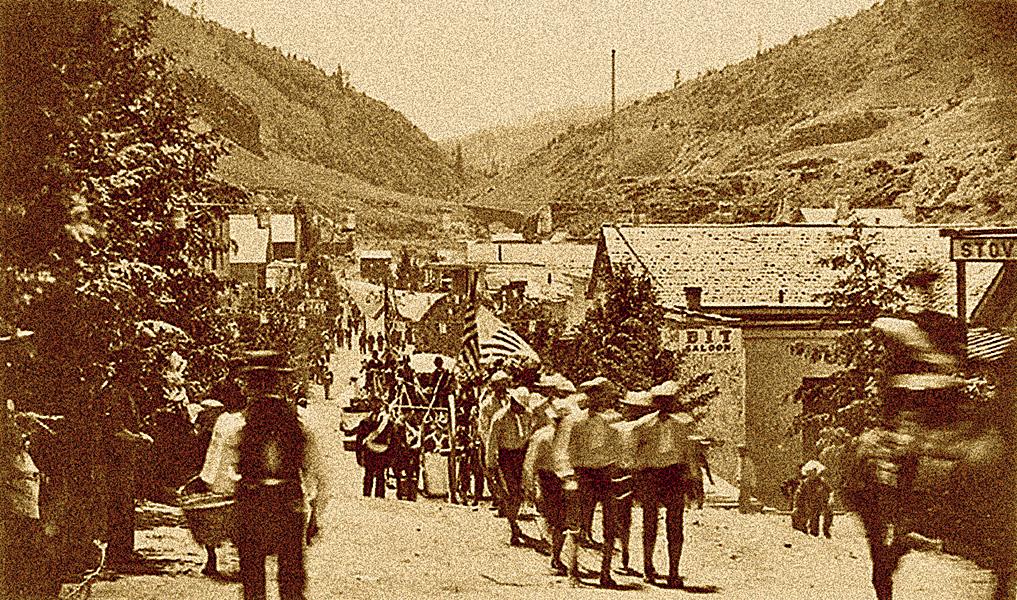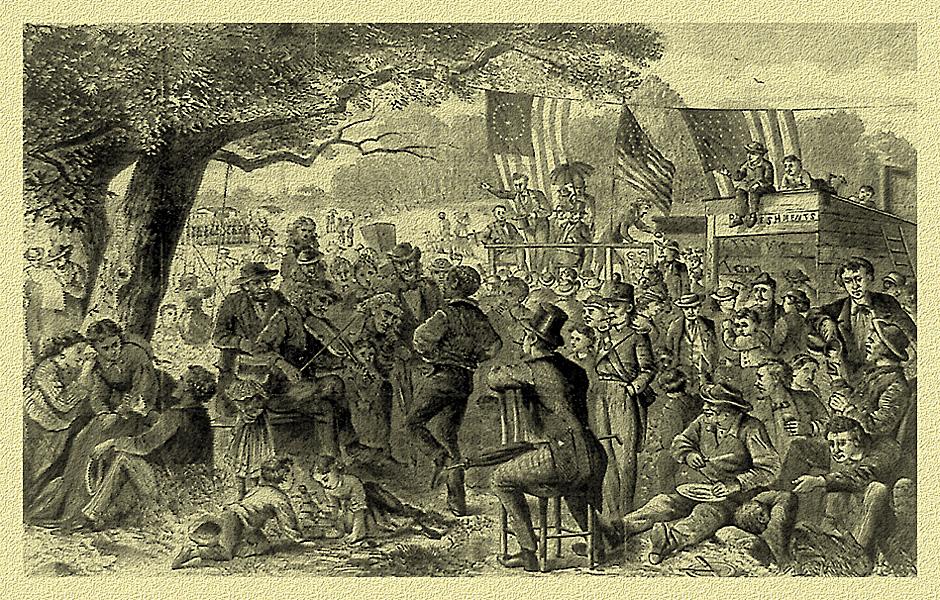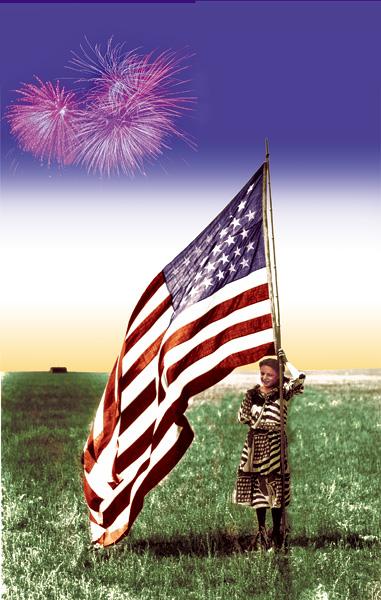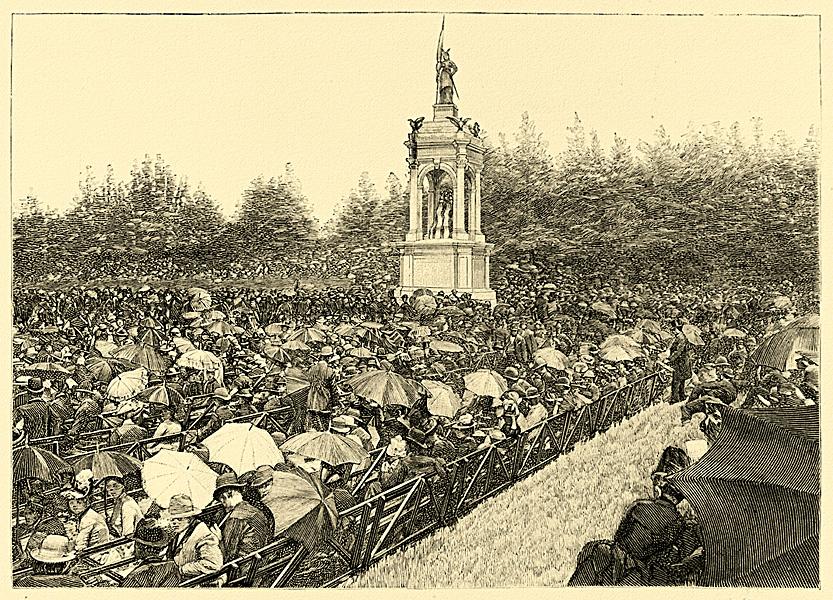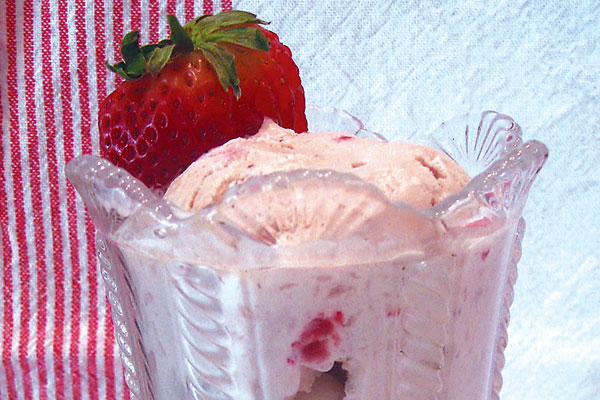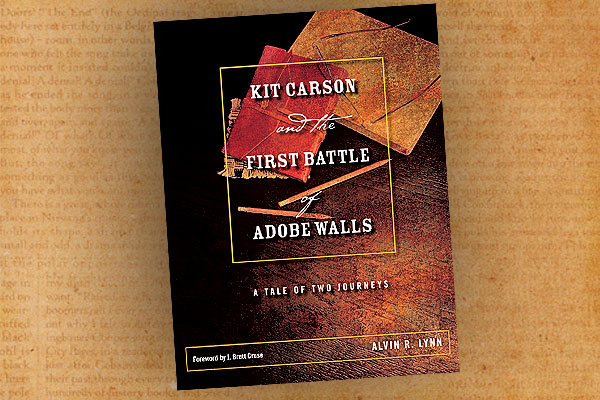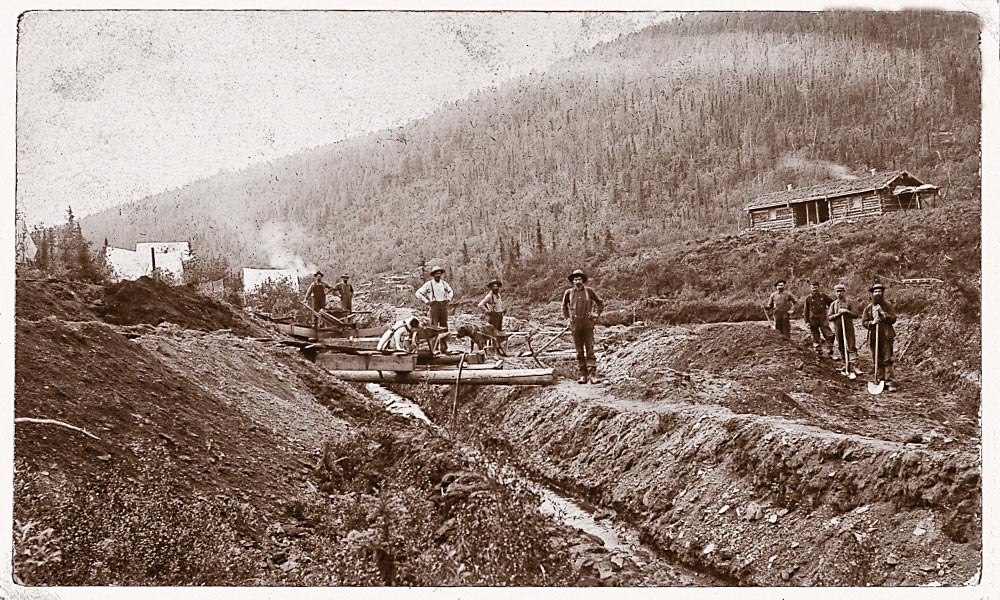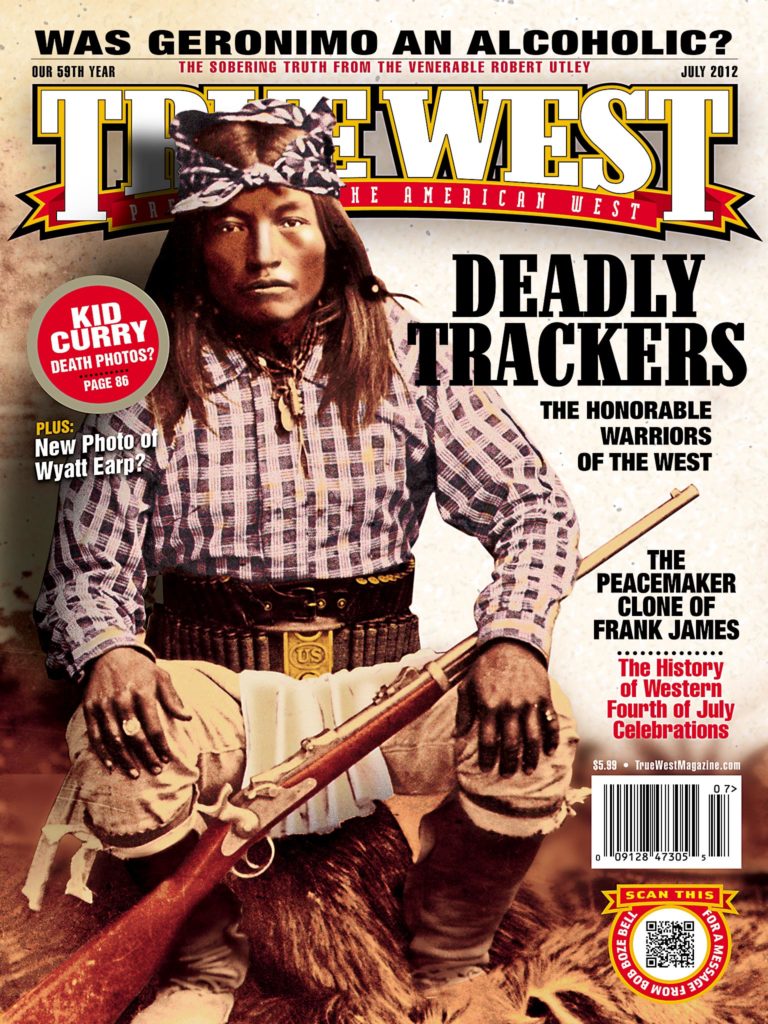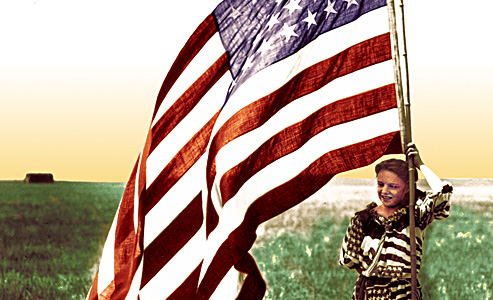 The Fourth of July celebrations were the great events in our lives,” recalled Mrs. Ford, who lived in Canyon City, Oregon, after the 1862 gold strike. “A typical celebration would be a picnic at noon, with barbecued sheep, hogs and young steers.
The Fourth of July celebrations were the great events in our lives,” recalled Mrs. Ford, who lived in Canyon City, Oregon, after the 1862 gold strike. “A typical celebration would be a picnic at noon, with barbecued sheep, hogs and young steers.
The tables would be piled high with the good food prepared by excellent cooks.”
Yet contrary to what some might think, Independence Day was not always celebrated in America, and it was hit or miss until the 1876 Centennial. On the Fourth of July, some towns merely shot off a cannon, fired guns, draped buildings with red, white and blue bunting or did nothing at all. More widespread celebrations were held, and they grew larger after 1876, however, it wasn’t until 1938 that it was legislated as a federal holiday with pay for its employees.
For those who lived in Canyon City during the 1860s, though, the holiday was indeed a momentous occasion. “After the picnic,” Mrs. Ford continued, “everyone would gather around a platform that was set up in the middle of the grounds. The band would play patriotic pieces and popular music of the day. A preacher would usually open the services with a long, dry exhortation to God to preserve and protect the union.
“Judge Dustin, a noted character of the day, gave the Fourth of July speech. Always he read the Declaration of Independence. Then, he would deliver an excellent address…. I have often heard told an amusing incident that occurred several years before my time.”
Charley Brown actually witnessed that “amusing incident.” “The Fourth of July was the ‘big time’ for everyone,” Brown remembered. “The whole countryside would meet in Canyon, on Whisky Flat, and celebrate…. It was during the early [18]60s that John C. Luce arose to read the Declaration. He read in a clear, firm voice nearly half of the Constitution of the United States before old H.W. Hill could pull the ends of his coattail and help John find the right page. If you wanted to make old John mad all you had to do was mention the Constitution. Yes sir, as far as John was concerned, they were fighting words.”
After the reading and speeches, folks spent the evening dancing. “We would dance the Virginia Reel, Polkas, Schottisch, Fireman’s Dance, Mazurka and the Varsovienne,” Mrs. Ford recalled. “At first these dances were danced to the hop craze. We would hop Polka and Schottisch. Later the glide craze came in, and we would waltz to the Minuet and other glide dances.”
John Adams, who would become the nation’s second president, would have been proud of Canyon City. After signing the Declaration of Independence, he wrote to wife Abigail: “The Second Day of July 1776, will be…celebrated, by succeeding Generations, as the great anniversary Festival…. It ought to be solemnized with Pomp and Parade, with Shews [Shows], Games, Sports, Guns, Bells, Bonfires and Illuminations, from one End of this Continent to the other from this Time forward forever more.” (Note he wrote July 2, not July 4, because that was the day Congress had officially declared independence before adopting the document on July 4.)
On June 30, 1819, St. Louis, Missouri, posted its plan to have a celebration in the St. Louis Enquirer, “Fourth of July—Citizens are requested to meet this evening on the gallery in front of the post-office precisely at 6 o’clock, to make arrangements for celebrating the anniversary of the Republic.”
The 1820 celebration at Camp Council Bluff (now Fort Atkinson State Historical Park) in Nebraska was quite patriotic. Troops were reviewed, an oration read and a national salute was fired. The attendees had dinner and drank toasts to many, including President James Monroe, the country, July 4, 1776, and George Washington.
Some towns had parades that included a Liberty cart. “And instead of queens and princesses as they have for everything today, there was Columbia,” Oregon old-timer Hortense Watkins recalled. “She sat up on top of the [Liberty] car, and all the little States were grouped in tiers about her, each little girl in white, with a big sash down over her shoulder, showing the name of the State she represented. Columbia always had to have fair or golden hair. It didn’t matter so much about the States, only they had to be pretty. The car was a big dray, all painted and draped with bunting and decorated with flowers and greens, with the seats arranged in rows one above the other. The car was drawn by four white horses, with lots of tassels and netting to set them off.”
Even traveling emigrants on the trails remembered the Fourth. Benjamin Cauthorn, who was headed to Montana in 1865, was one of them. While his party didn’t celebrate, he did make a special note in his diary about the day: “Here we are this Fourth of July stuck on the mud, while our friends in distant countries are celebrating the anniversary of the independence of the American nation…. How changed since ’76 then and for years after! All united in celebrating this day, but now only a few in comparison can enjoy it as in days past.”
Another more famous emigrant party, named Donner, celebrated the day. Eliza Donner wrote, “A salute was fired at sunrise, and later a platform of boxes was arranged in a grove close by, and by half-past nine o’clock everyone in camp was in holiday attire, and ready to join the procession which marched around the camp and to the adjacent grove. There, patriotic songs were sung, the Declaration of Independence was read, and Colonel Russell delivered an address. After enjoying a feast prepared by the women of the company, and drinking to
the health and happiness of friends and kindred in reverent silence, with faces toward the east, our guests bade us a final good-bye and godspeed.”
In addition to the Fourth, which was often the largest summer celebration, pioneers enjoyed fruit festivals, music fairs, rodeos, church bazaars, swimming, picnics, racing, county fairs and more during the summer season.
Since California towns were proud of their flowers, they began having flower festivals as early as the mid-1800s. Both Pasadena and Santa Barbara began their flower festivals in the early 1890s. Of the Santa Barbara festival, Charles Stoddard wrote: “Exhibitions have been held for many years, but the first great festival was held when President Harrison visited the Pacific coast. This was so successful that it was determined to make it a yearly attraction at Santa Barbara. In 1892 the second festival brought a large concourse of visitors, and its success was complete. The profusion of flowers was overwhelming. Ten thousand fine roses were used in decorating a single vehicle. A long procession of carriages, hidden beneath masses of flowers, and filled with beautiful ladies in tasteful and appropriate costumes, made a charming scene. The festival was opened by a ‘dance of the flowers,’ in which twenty-eight young ladies, each personating a flower, entered in sets of four, and to soft music went through graceful movements. After their simple dance, they advanced to the platform, where were seated the invited guests, and laid at their feet garlands
and wreaths.”
Peach Day was a big event in Grand Junction, Colorado, in 1891. Thaddeus Kenderdine happened to be passing through at the time: “The choicest of fruits are brought in to the town, literary exercises are held, and the wind up is a grand Tournament, when Cow-boys are the Knights and bucking-bronchos and fractious steers the material whereby they show their prowess and make a desert holiday.”
The Daily Herald in Grand Forks, North Dakota, even covered the Colorado event, “It was the first festival day of the kind observed in this state or perhaps in any other.”
Other Colorado towns had potato bakes and watermelon day.
Strawberry festivals were popular in just about every Western state, and they often included ice cream. While strawberry and ice cream went together, ice cream and music did as well. In June 1875 Nebraska City, Nebraska, held its Grand Ice Cream Festival and Musical Jamboree in the city park. The Daily Nebraska Press noted, “Hoppergrasses and weather permitting.”
Long before the white man began celebrating the Fourth of July, the Indians in the West hosted their own celebrations. Many included spiritual ceremonies, harvest festivals and what we know today as powwows. The term powwow in the mid- to late 1800s was used by the white man whenever Indians had a large gathering—either with them or on their own. After moving to Bonners Ferry, Idaho, in 1891 to enter into the dairy business, Mr. M.P. Bogle recalled, “Interesting spectacles of the times were the powwows held when the Kalispell Indians of Montana would came to visit the Kootenay Indians of Idaho near Bonners Ferry.”
The Quapaw Indians, like many other tribes, have been holding powwows for many generations. A powwow was “originally called a ‘picnic’ where a handful of Indians gathered to dance and visit,” Quapaw Tribe Public Relations Director Doreen Finnie says. “It grew into the present-day powwow. It’s a chance to strengthen cultural ties because the dress and dances are handed down from generation to generation. The annual powwow is a huge family reunion with family members coming from right down the street or across the country. Often powwow is the only time that family members can get together at one time. Most tribal families have ‘camps’ at the powwow grounds. These too are handed down from generation to generation. The camps run the range from simple tent-like affairs to actual buildings.”
So this summer, find a fun traditional event to enjoy and take time to ponder the past.
FRONTIER CELEBRATIONS
AZ: One of the nation’s oldest rodeos was first held in 1888 in Prescott as part of a Fourth of July celebration. This year’s celebration takes place June 28-July 4.
AR: In true pioneer spirit, the Historic Arkansas Museum in Little Rock offers up a frontier Fourth of July celebration that includes a reading of the Declaration of Independence and toasts in honor of the nation’s birthday.
CA: The state’s oldest festival dates to 1897 in Sonoma in honor of the fall harvest of wine grapes. A popular highlight is the re-enactment of the June 1863 wedding of Gen. Vallejo’s daughters to sons of Buena Vista Winery founder Count Agoston Haraszthy. Attend this September 28-30.
CO: Strawberry Days has been entertaining generations since 1898 and is the oldest civic festival in the state. Be a part of this historic celebration in Glenwood Springs from June 14-16.
ID: While Grangeville Border Days started as a rodeo in a pasture in 1912, it has evolved into a Fourth of July event, combining Old West traditions with American patriotism. Join Grangeville residents for the 100th-anniversary celebration between July 2-4.
IA: Lee County has the distinction of sporting the oldest county fair in Iowa. It has been celebrating all things Iowa since 1841. This year’s fair takes place in Donnellson between July 11-15.
KS: Boasting the largest fireworks display in northwest Kansas, the Wild West Festival in Hays is the place to be on Fourth of July. Relive frontier life on the Kansas plains by participating in activities that recapture the city’s colorful past.
MT: The Stevensville Creamery Picnic has been held ever since the community rebuilt John Howe’s creamery after a fire in 1911. This year’s gathering takes place August 3-5.
MN: Since the 1861 birth of the Pioneer Maennerchor (a male singing society), Norwood Young America has celebrated German heritage in song at its Stiftungsfest music festival; get immersed in Polka this August 24-26.
MO: Home to the longest-running Independence Day Parade west of the Mississippi, first celebrated in 1879, Marshfield also celebrates the Fourth with a rodeo and fireworks display; this year’s event takes place July 1-4.
NE: Founded in 1887 at the base of Scotts Bluff, a landmark for Oregon Trail emigrants, Gering has been hosting Oregon Trail Days since 1921. Attend the old-fashioned parade, chili cook-off and concerts this July 12-15.
NV: On July 4, participate in a flour sack race or take a cemetery tour at the city of Austin’s Old-Fashioned Fourth of July and Gridley Days heritage celebration.
NM: The oldest civic celebration of its kind in North America, Fiesta de Santa Fe has commemorated the 1692 resettlement of Santa Fe since the first fiesta in 1712; held this September 7-9.
ND: Remember the pioneers who blazed a trail into North Dakota by attending Old Settlers’ Day in Center on June 8-10. Held since 1905, the festival features music, food, art and a wagon train.
OK: Held since 1872, the Quapaw Tribe’s Powwow will offer up a Southern Plains contest, nightly stomp dancing and Indian football this July 4-7.
OR: Astoria Regatta, first celebrated in 1894 and held this August 8-12, honors the 1811 founding of Astoria, the first permanent U.S. settlement west of the Rocky Mountains.
SD: From June 1-3, Fort Sisseton in Lake City hosts a military encampment sharing the history of cavalry troops, fur traders and regional Indians.
TX: With free watermelon served on the Alamo grounds, San Antonio, on July 4, hosts two public readings of the Declaration of Independence to commemorate the 1845 vote of Texas statehood.
UT: Home to the longest, continuously-celebrated harvest festival in Utah, Brigham has been honoring its “abundance of the best peaches in Utah” since 1904; join the festivities on September 5-8.
WA: What happens when you combine celebrations of logging, town mergers, rodeos and Independence Day? You get the Loggerodeo in Sedro-Woolley, held from June 30-July 4 and the oldest Fourth of July celebration in Washington (first held in 1898).
WY: Every summer since 1897, Cheyenne has welcomed rodeo cowboys for its Frontier Days celebration; this year’s contests will be held from July 20-29.
Photo Gallery
The 1862 gold town of Canyon City, Oregon, has a long history of celebrating the Fourth of July. The Independence Day parade, shown above in 1885, is such a big part of the town’s pioneer history that artist Larry Kangas included an 1890s Fourth of July parade for his mural project painted on century-old buildings. You can see that mural on a building at the north edge of Canyon City’s park near City Hall.
– All images True West Archives –
This patriotically-dressed girl stands with America’s flag on July 4, 1906, at the Fort Belknap Reservation in Montana. During this week-long Fourth of July celebration, the Gros Ventres and Assiniboines celebrated the Sun Dance by participating in grass dances, sham battles and horse races.
San Francisco celebrated its Fourth of July in 1888 by unveiling the nation’s first memorial to Francis Scott Key who penned the lyrics for “The Star-Spangled Banner.” The monument was placed in the city’s Golden Gate Park 43 years before the song became our national anthem.


